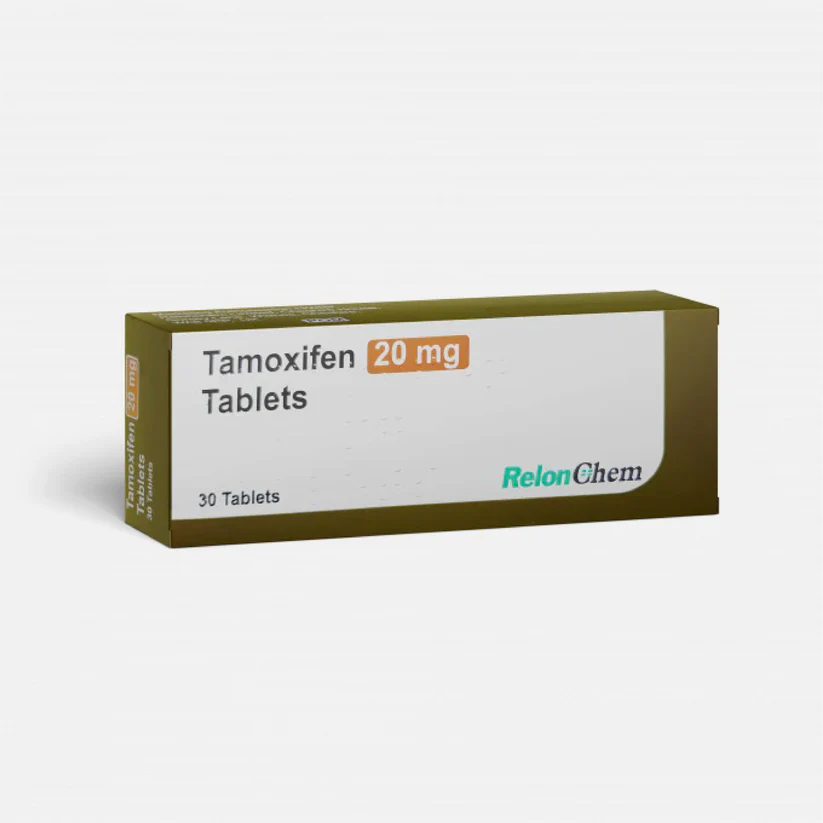Description
Tamoxifen is a selective estrogen receptor modulator (SERM) that has been a cornerstone in the treatment and prevention of hormone-receptor-positive breast cancer since its introduction in the 1970s. Its unique mechanism of action and proven efficacy have made it a vital tool in oncology, particularly for patients with estrogen-dependent tumors.
Mechanism of Action
Tamoxifen operates by selectively binding to estrogen receptors in breast tissue, effectively blocking the effects of estrogen. In estrogen-sensitive cancers, this blockade halts the proliferation of cancer cells that rely on estrogen for growth. Unlike traditional anti-estrogens, Tamoxifen can also act as an agonist in other tissues, such as bone and the endometrium, which can have both beneficial and adverse effects.
Key Features and Benefits
- Effective Treatment for Breast Cancer:
- Tamoxifen is primarily prescribed for patients diagnosed with estrogen-receptor-positive breast cancer. It is utilized in various treatment settings, including:
- Adjuvant Therapy: After surgery to reduce the risk of recurrence.
- Neoadjuvant Therapy: Before surgery to shrink tumors for easier removal.
- Studies have demonstrated that Tamoxifen significantly improves overall survival rates and decreases recurrence rates in women with hormone-responsive breast cancer.
- Preventive Use:
- For women at high risk of developing breast cancer—such as those with BRCA mutations or a strong family history—Tamoxifen can serve as a preventive measure. Research indicates that it can lower the risk of developing breast cancer by nearly 50% in this population.
- Hormonal Balance:
- By blocking estrogen in breast tissue, Tamoxifen helps to restore hormonal balance in women undergoing treatment for hormone-responsive cancers. This can be particularly helpful for patients experiencing symptoms related to hormonal fluctuations.
- Convenient Administration:
- Tamoxifen is available in oral tablet form, making it easy for patients to take at home. The typical dosing regimen involves daily administration, which can be easily integrated into daily routines.
- Established Safety Profile:
- Extensive clinical trials have established Tamoxifen’s safety and efficacy profile. While some side effects may occur, many patients tolerate the medication well. Common side effects include hot flashes, mood swings, and nausea, but serious complications are relatively rare.
Administration and Dosage
Tamoxifen is usually prescribed at doses ranging from 10 mg to 20 mg per day, depending on the specific treatment plan and patient characteristics. The duration of therapy often spans five years or longer, particularly for those receiving adjuvant therapy. Regular monitoring through clinical evaluations and imaging may be recommended to assess treatment efficacy and manage any side effects.
Potential Side Effects
While Tamoxifen is generally well-tolerated, it can lead to some side effects, including:
- Hot Flashes: These are one of the most common side effects and can vary in intensity.
- Nausea and Vomiting: Some patients may experience gastrointestinal discomfort, although this is often mild.
- Mood Changes: Emotional fluctuations, including depression or anxiety, can occur in some users.
- Increased Risk of Blood Clots: Patients may have a slightly elevated risk of venous thromboembolism (VTE), which requires monitoring.
- Endometrial Changes: In postmenopausal women, Tamoxifen may increase the risk of endometrial cancer, necessitating regular gynecological check-ups.
Conclusion
Tamoxifen is a critical medication in the management of breast cancer, particularly for estrogen-receptor-positive tumors. Its ability to effectively block estrogen’s proliferative effects on cancer cells makes it a powerful tool in both treatment and prevention. With a well-established safety profile and the convenience of oral administration, Tamoxifen remains a first-line therapy for many women facing the challenges of breast cancer. As with any medication, it is crucial for patients to be monitored by healthcare professionals throughout their treatment to ensure safety and maximize therapeutic benefits.
 Trenbolone Acetate
1 × $107.00
Trenbolone Acetate
1 × $107.00  Sermorelin & Ipamorelin Blend (10mg)
1 × $180.00
Sermorelin & Ipamorelin Blend (10mg)
1 × $180.00  Testosterone Propionate
1 × $104.00
Testosterone Propionate
1 × $104.00 



Reviews
There are no reviews yet.